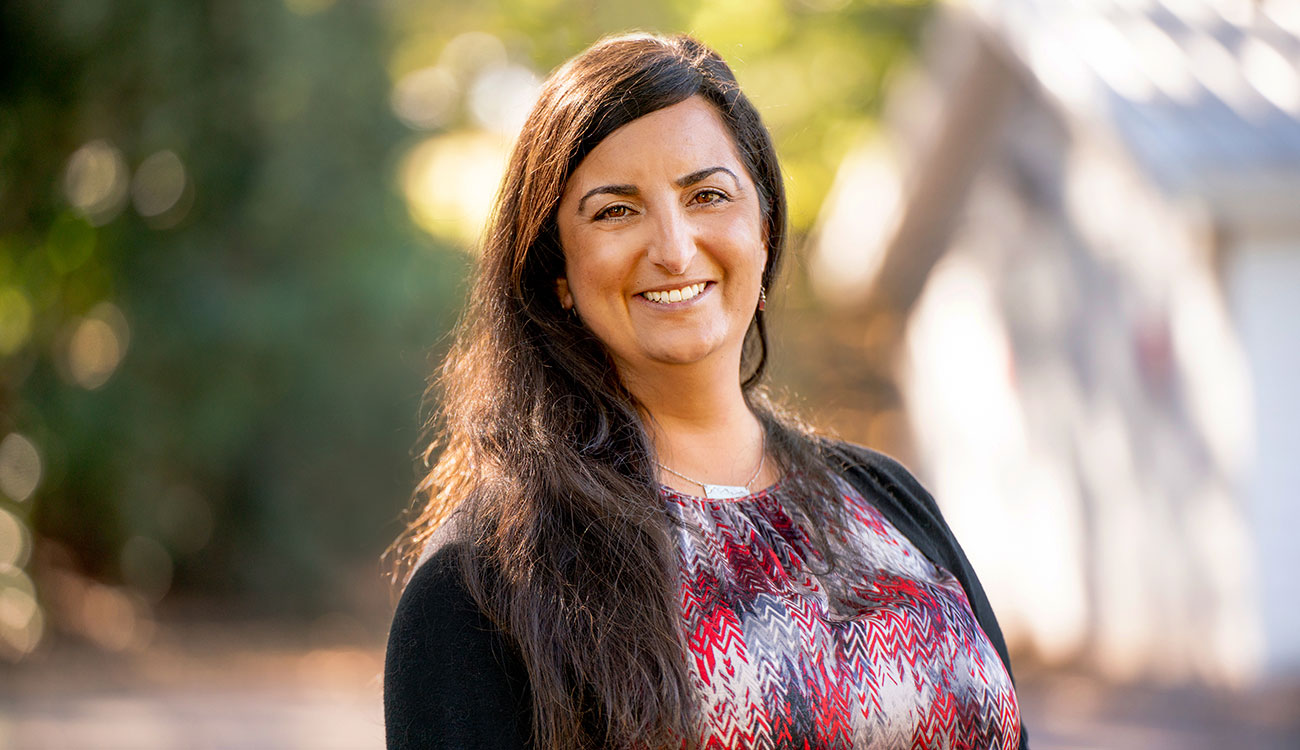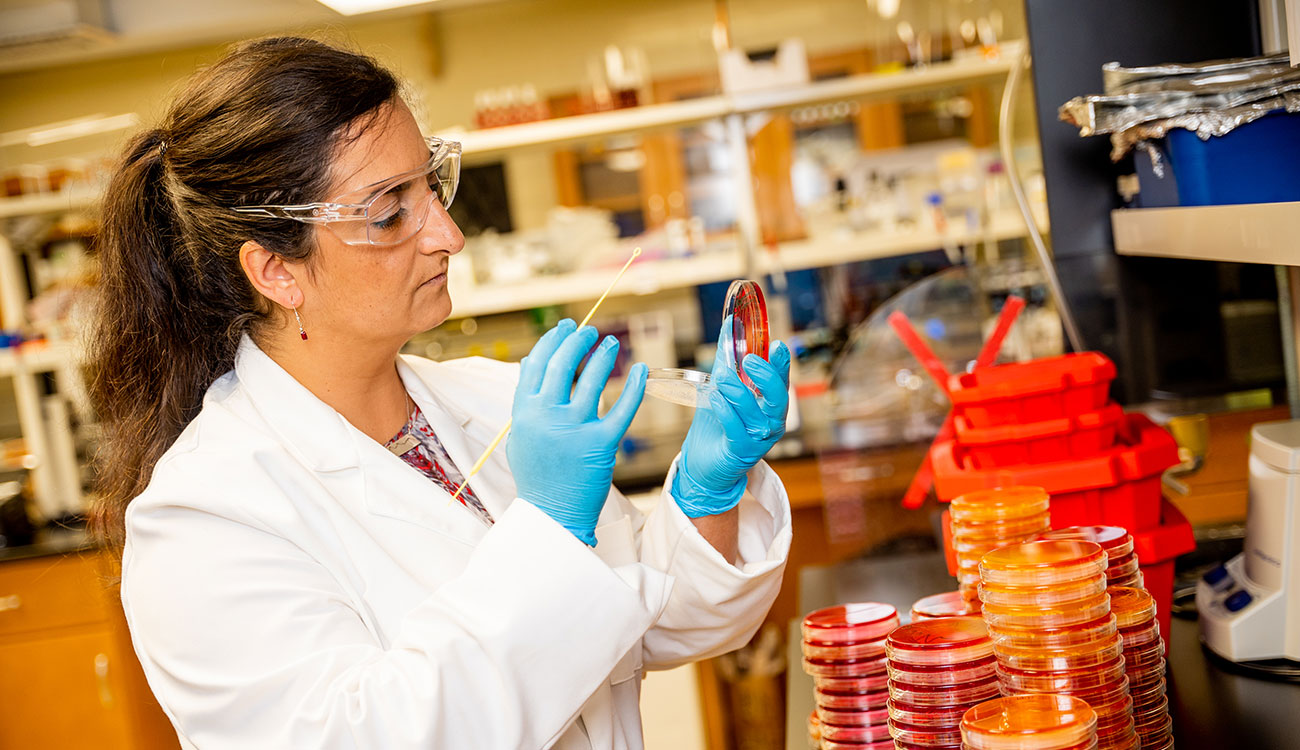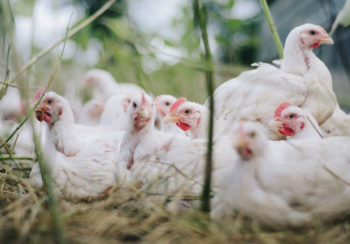To keep pathogens out of the nation’s stores and pantries, food inspectors and outbreak detectives take samples from the food supply, grow a culture, and analyze it to see if any contaminants are present. It’s an essential procedure for states like Georgia, the nation’s top producer of broiler chickens.
“However, that only identifies the Salmonella that are most abundant,” said Nikki Shariat, assistant professor of population health in UGA’s College of Veterinary Medicine. “I wondered: What would it mean for food safety if there are multiple strains of Salmonella present at the same time?”
Turns out, there often are. And that means, while these inspections can alert investigators to the pathogens that are most plentiful, there can be other pernicious Salmonella present in smaller amounts. The current technique used by food inspectors only identifies the top one or two.
“No one has the manpower or the finances to routinely test the 100 or so different colonies that might be present on a plate,” said Shariat.
So if the top one or two found can’t cause illness in humans, but others with higher pathogenicity are flying under the radar, then people who eat the product without correct preparation may get sick. And they do. According to the U.S. Centers for Disease Control and Prevention, Salmonella bacteria cause around 1.35 million infections, 26,500 hospitalizations, and 420 deaths in the United States every year.
Shariat’s invention, CRISPR-SeroSeq, increases the power of food safety tests by ramping up their sensitivity for identifying multiple strains of Salmonella, including those that make people and animals sick.
“With CRISPR-SeroSeq, we want to tell you all of the different serotypes that are present in the sample,” said Shariat. “So far, we have used this molecular tool to investigate Salmonella in different food animal production systems, including broilers, turkeys and also cattle, and often where we find Salmonella, we find multiple different types of Salmonella. Our environmental work in freshwater has also shown a high diversity of Salmonella.”

To understand how CRISPR-SeroSeq works, it helps to understand what CRISPR is and what it does.
Single-celled organisms, like bacteria, contain naturally occurring segments of genetic code known as CRISPR, which is short for Clustered Regularly Interspaced Short Palindromic Repeats. Put simply, CRISPR is bacteria’s way of keeping track of organisms that have preyed upon it. When a virus, for example, invades a cell, the cell responds, in part, by snipping out a section of the virus’s DNA and adding it to the CRISPR array of the bacterium. Think of it as a rogues’ gallery or a collection of mug shots. When an organism spots an invader with one of the DNA sequences contained in its book of mug shots, or its CRISPR array, it sends proteins to neutralize it.
Microorganisms, like the bacterium Salmonella, have distinctive structures on their surface known as antigens that indicate the specific Salmonella serotype. And that’s important because only certain serotypes of Salmonella make people sick.
“Serotyping is one of the main ways we can characterize bacteria,” said Shariat. “In Salmonella, we’ve found that the identity of the CRISPR sequence matches the identity of the serotype. It’s like a bacterial molecular fingerprint that links to the serotype. We can use that information the sequence gives us to identify whether the Salmonella we’re looking at is one that is likely to make one sick.”
Currently, CRISPR-SeroSeq is only used to identify different strains of Salmonella, but by tweaking the sequences it searches for, it could be used to differentiate strains of other bacteria as well.
In a study that appeared last year in the journal Antimicrobial Agents and Chemotherapy, Shariat’s team looked at the efficacy of traditional culturing methods. They found that food inspectors’ standard method misses around 60% of all the samples tested. What’s more, they discovered that about one out of every 10 samples contained a drug-resistant strain of Salmonella. In each case this particular strain of Salmonella was outnumbered by other Salmonella strains.
Shariat said her lab at UGA’s Poultry Diagnostic and Research Center is currently honing its work to be able to use CRISPR-SeroSeq to “to get ahead of the eight ball to look at Salmonella populations at a very high resolution so we can see the minor fluctuations in the serotypes as they are occurring.”
“There are often waves of one or two prominent Salmonella serotypes commonly found in poultry,” she said. “Following an outbreak caused by a single serotype, poultry producers will target that particular serotype to remove it from their production chain. However, Salmonella is a nifty bug, and this causes a ‘Whack-a-mole’ effect where one serotype is removed and another one pops up
Shariat hopes that by studying Salmonella populations, she can predict which serotypes will be of the greatest concern and allow the poultry industry to create vaccines or use other measures to fight against them before an outbreak occurs.
“We hope that these analyses provide poultry companies and other food producers with another tool to defeat Salmonella,” said Shariat.






